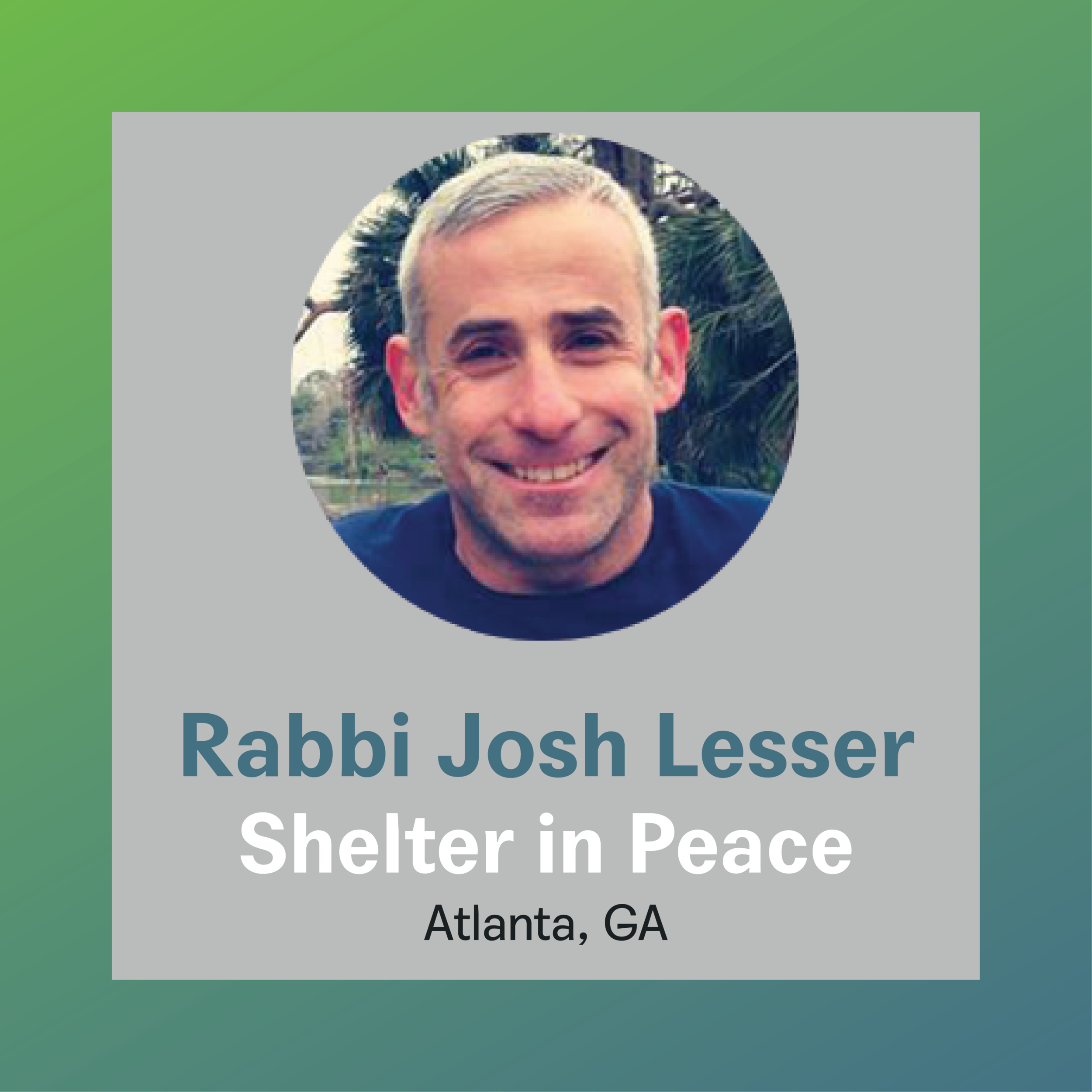How did you get to your High Holy Day box and why?
Coming out of Passover, I knew we could do more and needed to, given the ongoing pandemic. I have dozens of congregants who work at the CDC as dedicated scientists; there was no question congregants would be at home for the High Holy Days. We wanted to set a different expectation, creating an experience that would run from Av through the entirety. I drew on a teaching by the Baal Shem Tov where he says in hard times we need to yield to reality, discern our choices, and then to sweeten that reality. To help congregants do that, we played with the meaning of “sheltering in place,” and we found that we could transform that sheltering by symbolically adding an “=” to the “l” in pLace to get “shelter in pEace.” With this theme we could grieve what needed to be grieved and sweeten it with tools for congregants to transform their place into a feeling of peace.
Tell me how you got to what went into the box?
We started with a visual of a starscape through the lettering of the theme. People reported that the imagery “blew their mind;” the box was definitely not just about an apples and honey approach to Rosh HaShanah. Then, we focused on tools to help people do rituals on their own.
We generated a series of guides. For tashlikh, there was a do-it-yourself traditional text and a bottle of bubbles in case you might not leave your home. The place we usually rent for the High Holy Days has a labyrinth that congregants walk during the Yom Kippur break, so we included a labyrinth preparation guide with links to find one near you. We also talked with congregants to get ideas for how to transform your home into a sanctuary. We ran Zoom workshops to walk people through the guides, too.
More than just the guides, though, we wanted a multi-sensory experience. Here, the congregants and staff got really excited and involved. We had ten of them create playlists; other congregants created unique artwork, including a shviti. Congregants were also the ones to deliver the boxes, reminding everyone of the power of seeing one another.
Sounds like many were involved in this project. Can you say more about that?
We learned so much by involving others. First, I have to say that the Facebook group I co-created, Dreaming up the High Holidays, was incredibly helpful for iterating ideas. It felt like I started with so many partners before I even got to my staff. For the staff, we are sometimes reticent to engage congregants on the off-chance they drop the ball. In this case, we decided it was worth putting in great structure to harness the excitement we were seeing. I discovered, too, that positive feedback from congregants does not always get to staff, so I made a point to sharing it with them. It was good for all of us.
What did you learn that might be useful to others considering a project like this one?
We were right to invest in making it high quality: people were reporting feeling care for, excited, and appreciative of the intent. We even met our fundraising goal well ahead of Rosh HaShanah. We also hope to refine our learning around support structures for congregant involvement; the right tracking system could allow so much more throughout the year. We also underestimated how we might share; next time I would definitely order more boxes!
Rabbi Joshua Lesser leads Congregation Bet Haverim in Atlana, GA. Known for innovation and encouraging new leaders, he is a catalyst for engagement in synagogue life. He is active in inter-faith and social justice work, founding Rainbow Center (now SOJOURN), serving on the Reconstructionist Jewish Federation’s Tikkun Olam Committee and Kol Echad Inclusion Task Force, and working with T’ruah: The Rabbinic Call for Human Rights. He was ordained by the Reconstruction Rabbinical College and is a graduate of Northwestern University.

